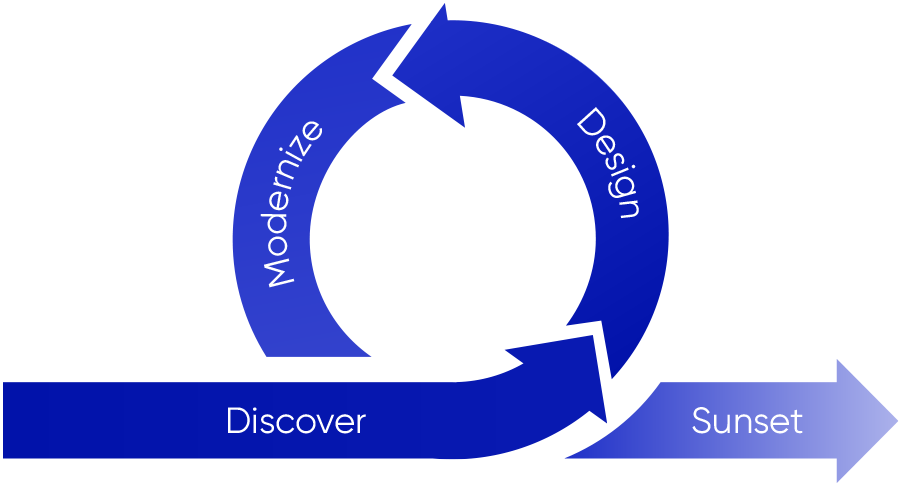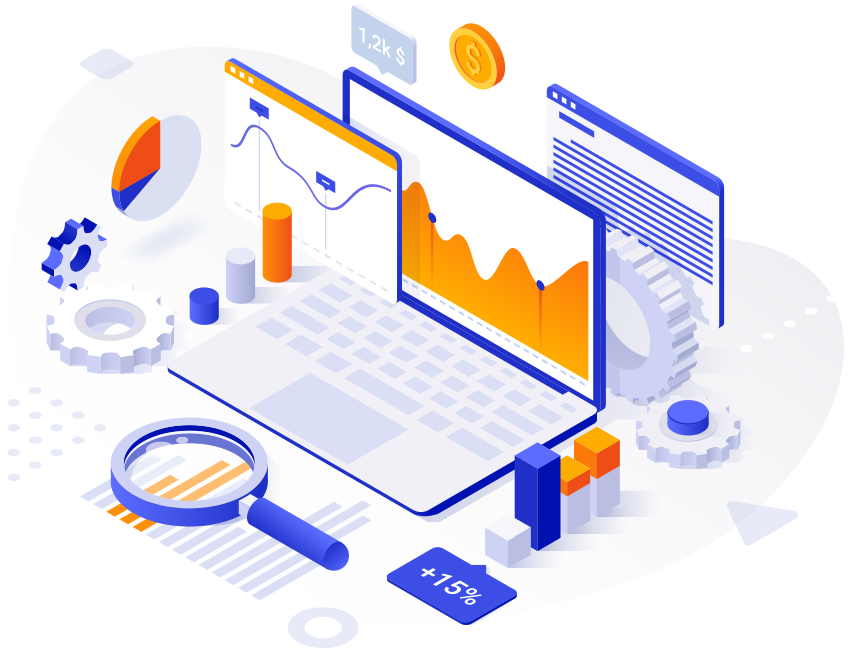70% of cloud migrations fail, but 100% of Blueprint cloud migrations succeed. Here’s our playbook.
Keeping data on the cloud has various well understood business benefits including information and operation security, lower storage costs, and a streamlined employee onboarding and access experience. The last few years have seen a strong trend towards cloud migration, with Business Insider predicting that 85% of enterprises will be on the cloud by 2025.
Major businesses, such as credit card companies at high risk for data breaches have reported that cloud migration has helped them reduce cost while increasing overall security.
Whether you’ve decided to update your data estate by moving onto the cloud, are in the middle of a cloud migration, or just starting to learn about cloud migration and its benefits, read on to learn about the scope of the project, our suggested best practices, and tips on leveraging your new cloud environment for overall business efficiency, cost reduction, and more.
Cloud migration challenges
Cloud migration is a large undertaking
Everyone understands the benefits of cloud but not every organization is aware of the full scope and operational requirements of a migration project.
Employee bandwidth
If the workload of a data migration is not well understood, organizations run the risk of conflicting priorities overloading their employees beyond their capacity. This can cause delays in planning, underestimating resource requirements, and overall increase in cost.
Lack of leadership and core team cohesion
Often, core teams are unable to fully communicate benefits of a cloud migration to leadership, and leadership is unable to communicate how the structure of the organization will impact a cloud migration. This can be a recipe for work and rework and often leads to burn out and abandonment of migration projects.
High upfront cost
When done correctly, organizations have made their Databricks investment back within six months. But, across cloud services, when organizations don’t have a clear plan or understanding of the migration process, many have shown to go as much as 50% over budget – and, in the most extreme cases, lose millions of dollars when they must back out of the project and go back to on-prem.
Risks and redundancies
Organizations often fall victim to the “lift and shift” method of data migration. This means taking decades of data and dumping it into a new platform. This is just a way to move all types of problems from one system to another. 70% of data stored in legacy systems is duplicate, redundant or obsolete. Not accounting for “clean up” of the data not only costs organizations thousands if not millions in wasted costs, but it also opens them up to sloppy operations and increased security risks.
Due to these challenges, most enterprises choose to work with cloud migration experts like Blueprint. We understand the challenges and walk you through each key decision to ensure efficient, cost-effective, and scalable migration to the cloud.
Cloud migration challenges
Best in class data migration methodologies
We build a migration that’s easy to adopt and easy to use. If you can’t use your cloud infrastructure, it’s a sunk cost. Our delivery teams have deep domain expertise and design with industry, business, and product needs in mind.
Modernize your estate as you migrate
Lift-and-shift migrations promise continuity but fail to fully utilize the new capabilities provided by the cloud. A true modern data estate allows you to access disparate sources of data regardless of where they reside. We dig deep to understand your business and build an iterative and scalable Lakehouse.
Leverage our tools and resources
We’ve seen many migrations and we know what works. Leverage our expertise to cut costs, increase efficiency, and successfully migrate to cloud. You can take a phased approach to migrating data from systems into your lakehouse environment, and tap into our tools and resources to accelerate these migrations so you can quickly extract data intelligence and business value from these projects.
The playbook: discover, design, modernize, sunset
Blueprint utilizes a principled framework to help guide the discovery, design and modernization phases of the engagement:

Discover
We take a lightweight approach to discovery: don’t dwell on the past, but let it inform your future.
We deploy a series of environment profiling tools and systematically assess your data landscape: from the external tools, orchestrations, and integrations to the data platform itself and your established usage patterns.
Design
With a comprehensive current state profile, we focus on modernization opportunities to improve current-state operations and prepare a plan to iteratively execute on individual business process-driven use cases and workloads. We’ll identify what should be modernized, mapped over, or abandoned.
Modernize
Our systematic, pattern-based, approach to migration prioritizes speed, agility, and service continuity. After establishing the target infrastructure topology for success, we will progressively move historical data, merge with new data via updated E&L pipelines & orchestrations, refactor procedural code, establish views and semantic logic, as well as role/app-based permissions and governance, privacy structures, and reconfigure external apps.
Sunset
With final migration and testing completed, we can now decommission old systems and enjoy the new, modern platform in production. Next, we provide training and documentation so the new system can be holistically understood, and we engage in a retrospective where we review success criteria and plan for the next use case to either build or migrate.
Applying the concepts – a retail use case

Businesses in different industries have different goals for their data migrations. For instance, a retailer could be interested in:
- Better management of purchase orders
- Generating accurate consumer demand forecasts
- Analyzing product reviews and customer sentiments
- Using product recommendation engines for strategic upselling/cross-selling
- Building customer experience and loyalty with fickle customers
- Attracting and keeping skilled employees
- Gaining real-time data from sources across the value chain
- Real-time collaboration with suppliers of all sizes
- Automate workflows to enable quick, responsive, and flexible supplier onboarding
Blueprint works closely with each client to build their cloud to address these needs and solve their sticky business problems. We can help your cloud enable more fulfilling customer experiences, effectively manage supply chains, and increase innovation in your supplier and partner ecosystem.
We know retailers are trying to mitigate several economic challenges such as supply chain disruptions, an unpredictable workforce and inflation.
Moreover, these are not problems that only impact retailers, they are impacting industries as disparate as oil and gas, utilities, manufacturing and tech.
A strategically planned migration gives businesses the tools to combat these issues — and the businesses that choose to take that step will be the leaders of the future.
Wherever you are in your data intelligence journey, we can be an extension of your team. Let’s talk about how we can speed time to value.

